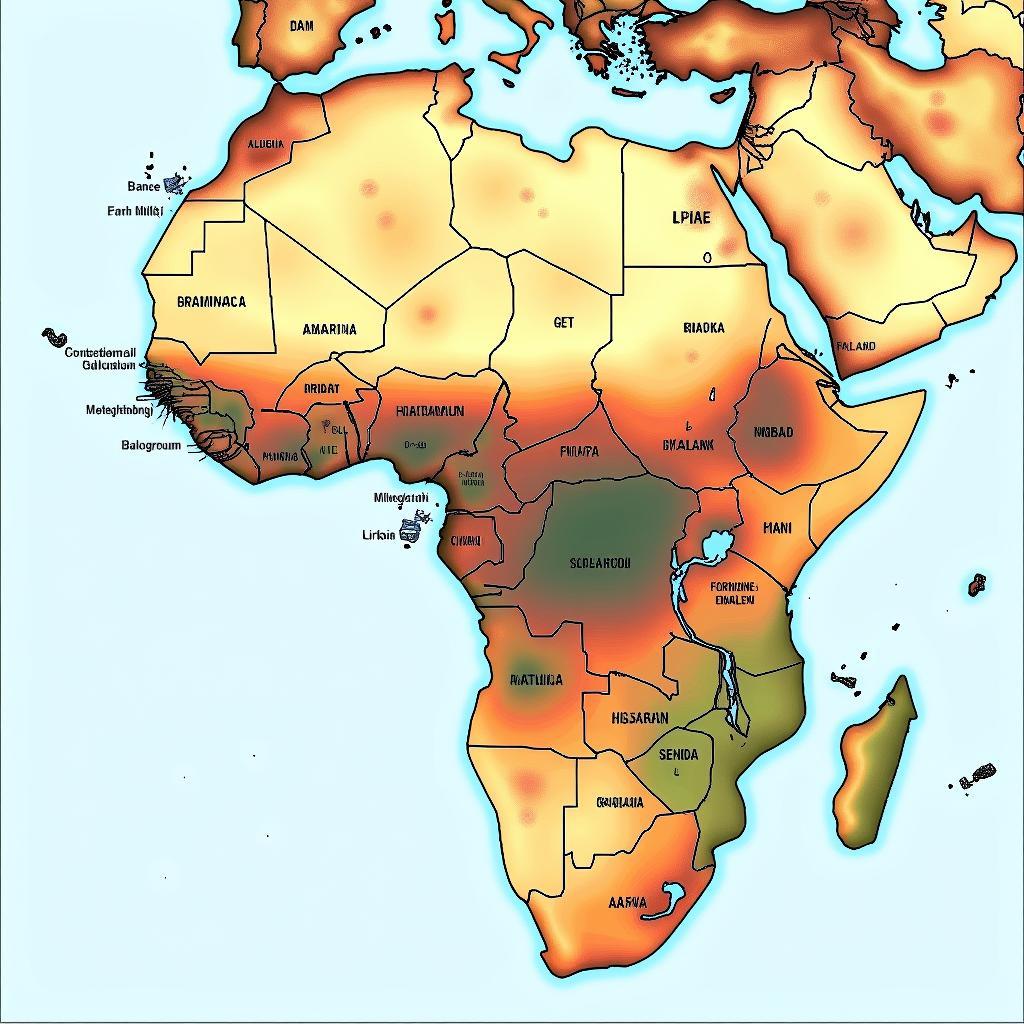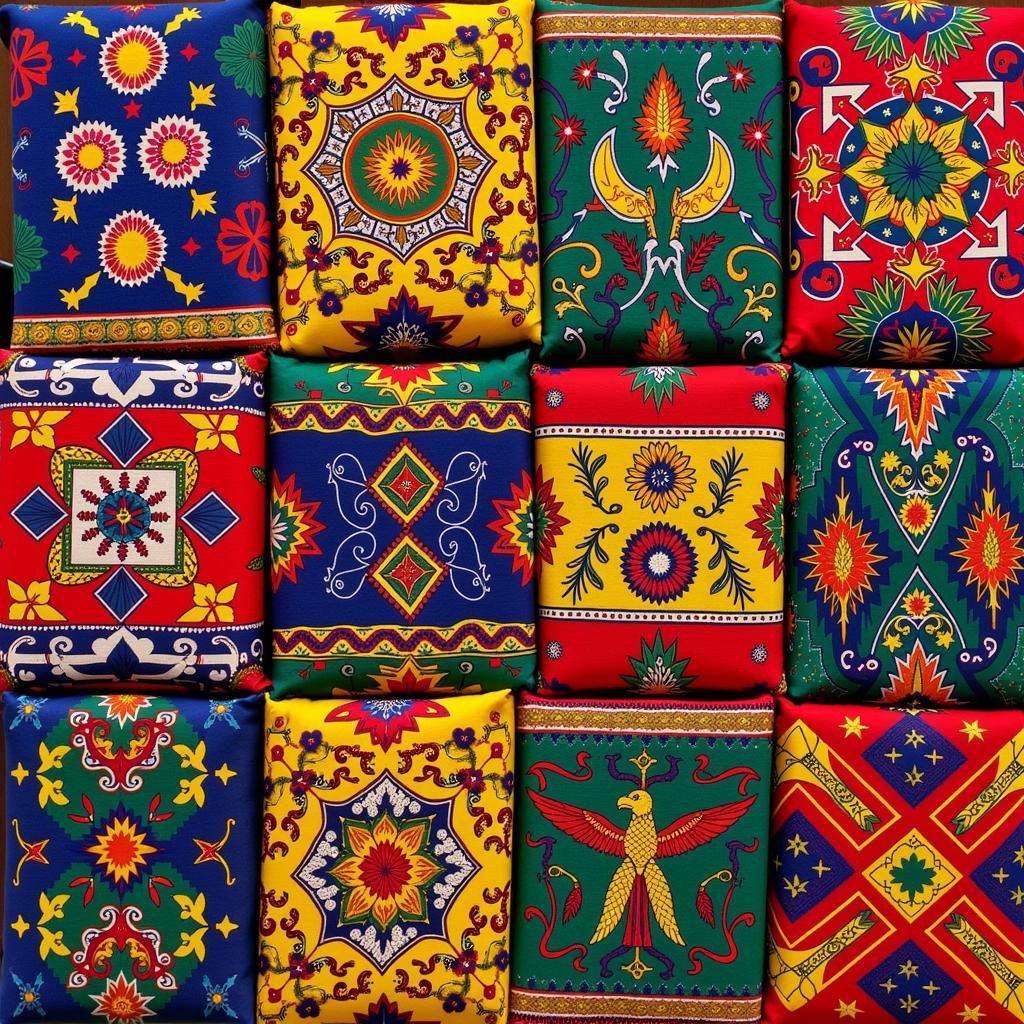Unveiling the Majesty of African Kente Fabric
African Kente Fabric is more than just cloth; it’s a vibrant tapestry of history, culture, and artistry. Woven into every thread is a story of royalty, tradition, and a heritage passed down through generations. From its origins in the Ashanti Kingdom to its global recognition as a symbol of African pride, kente cloth holds a unique place in the world of textiles.
The Rich History of Kente Cloth
The history of African kente fabric is deeply intertwined with the Ashanti people of Ghana. Legend has it that two brothers, Kuragu and Ameyaw, from the village of Bonwire, learned the art of weaving by observing a spider spinning its web. Inspired by the intricate patterns, they created their own designs using raffia fibers, eventually leading to the development of kente cloth. This intricate weaving process, traditionally passed down through families, has elevated kente from a simple textile to an art form revered for its beauty and symbolism.
The very word “kente” is derived from the Akan word “kenten,” meaning basket, referring to the cloth’s original woven structure. Over time, kente became associated with royalty and prestige, reserved for special occasions and ceremonies. Kings and queens adorned themselves in elaborately designed kente, each pattern telling a story or conveying a specific message.
Understanding Kente Patterns and Symbolism
Each kente pattern is imbued with symbolic meaning, reflecting proverbs, historical events, social status, and even religious beliefs. The colors themselves carry significance: gold represents royalty and wealth, green symbolizes growth and renewal, blue signifies peace and harmony, and red represents political and spiritual power. For example, the “Nyame Nti” pattern, meaning “by God’s grace,” reflects a deep spiritual connection.
The complexity and artistry of african kente fabric sale extend beyond mere aesthetics. Each design is a visual language, telling a unique story and connecting the wearer to their heritage. Understanding these symbolic meanings adds another layer of appreciation for this remarkable textile.
What do the colors in kente represent?
Each color holds a specific meaning. Gold represents royalty and wealth, green symbolizes growth and renewal, blue signifies peace and harmony, while red represents political and spiritual power.
Kente in the Modern World: From Tradition to Trend
Today, African kente fabric has transcended its traditional roots and become a global symbol of African identity and pride. It’s seen on fashion runways, in art galleries, and incorporated into contemporary designs. about 2020 african class fashion trend highlights the growing presence of kente in the fashion world. From african inspired suit to accessories, kente adds a touch of vibrant elegance to modern wardrobes. This cultural exchange has also led to innovative designs, blending traditional techniques with contemporary styles.
Kente’s versatility extends beyond clothing. It’s used to create stunning home décor pieces, accessories, and even artwork. This adaptability ensures that kente remains relevant and continues to inspire creativity across various mediums.
How is kente used today?
Beyond its traditional ceremonial use, kente is now a global fashion statement, incorporated into clothing, accessories, home décor, and art, symbolizing African pride and heritage.
“Kente cloth isn’t just fabric; it’s a living testament to the rich artistry and cultural heritage of the Ashanti people,” explains Dr. Adjoa Osei, a textile historian specializing in West African traditions. “Each strip, each color, each pattern tells a story, connecting us to the past while inspiring the future.”
Caring for Your African Kente Fabric
Proper care is essential to preserving the beauty and longevity of your African kente fabric. Hand washing with mild soap is recommended to avoid damaging the delicate fibers. Avoid direct sunlight when drying to prevent color fading. Storing your kente in a cool, dry place will also help maintain its vibrant colors and intricate patterns.
“Investing in authentic kente supports the artisans who dedicate their lives to preserving this ancient craft,” adds Kwame Asante, a master kente weaver from Bonwire. “By cherishing and caring for these pieces, we ensure that the traditions and stories woven into each thread continue to be shared for generations to come.”
Conclusion: The Enduring Legacy of African Kente Fabric
African kente fabric continues to captivate and inspire, weaving together a rich history with a vibrant present. From its royal origins to its global presence, kente represents more than just a textile; it’s a symbol of cultural pride, artistic expression, and a living legacy passed down through generations. african female dresses showcase the beauty of this fabric.
FAQ
-
What is African kente fabric made of? Traditionally, kente is woven from silk and cotton.
-
Where does kente originate? Kente originates from the Ashanti Kingdom in present-day Ghana.
-
Can anyone wear kente? While traditionally worn by royalty, kente is now embraced by people of various backgrounds as a symbol of African heritage.
-
How is kente made? Kente is woven on narrow strip looms, and these strips are then sewn together to create larger pieces.
-
What is the significance of kente patterns? Each pattern carries symbolic meaning, often representing proverbs, historical events, or social status.
-
How can I purchase authentic kente? Look for reputable vendors who support fair trade practices and work directly with artisans.
-
How do I care for my kente? Hand washing with mild soap and air drying is recommended.
For any assistance, please contact us at +255768904061 or email kaka.mag@gmail.com. You can also visit us at Mbarali DC Mawindi, Kangaga, Tanzania. We have a 24/7 customer service team.


